Review: Lenovo Helix Ultrabook Convertible
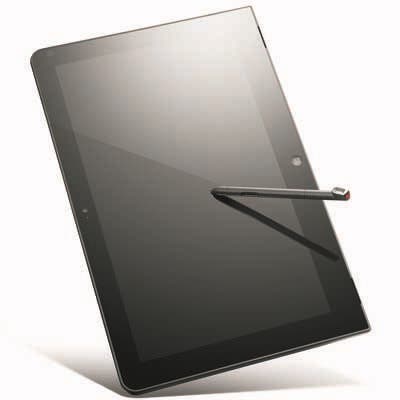
Lenovo Helix
When first looking at the Lenovo Helix, the CRN Test Center lumped it in with devices like Surface Pro: a Windows 8 tablet with detachable keyboard. It didn't take long to realize that Lenovo's latest convertible Ultrabook was something more.
While most convertibles offer two or three operational modes, Helix has up to five thanks to a reversible docking system that's as simple as it is clever. Helix is among the most innovative devices we've seen this year. Here's a look at some of the highlights.
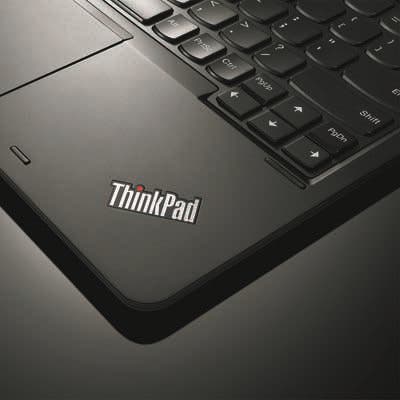
Look And Feel
First, let's get physical. Helix is covered head to toe, inside and out, by a rubberized coating that's cool to the touch and gives it a grippy quality regardless of where it's gripped. As for dimensions, Helix as a tablet measures 11.7 inches long by 7.3 inches wide by 0.5 inches thick. Against Surface Pro 2 and its 10.6-inch display, Helix is about an inch longer and a half-inch wider, but it's 0.03 of an inch thinner. The Helix tablet weighs 1.8 pounds compared with Surface's 2 pounds. As a clamshell, Helix puts on 2 pounds (to 3.8 lbs. total) and its thickness expands to 0.8 inches. Length and width remain the same.
ThinkPad logos adorn the Helix on the wrist rest and back side of the tablet. Each dots the ThinkPad's "i" with a red LED, the outer of which indicates power-on, sleep state and battery status. When in laptop mode, the display's tilt angle is limited to about 100 degrees, presumably to prevent a topple off the lap. A panel covering the keyboard hinge pops off and on easily rather than breaking.
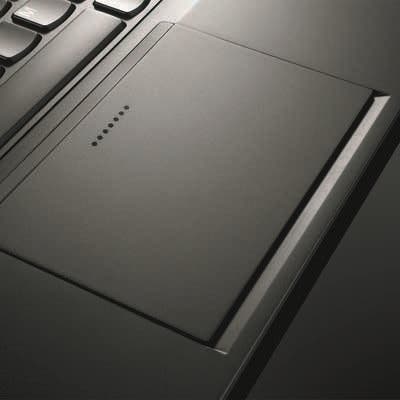
Keys And Controls
A wide, five-button touchpad supports pinch and three-finger gestures, and swiping in from the sides mimics the action on the touchscreen. This is a huge convenience, particularly considering the less-than-perfect mouse response of Windows 8. In tests, the Helix touchpad tended to throw the mouse pointer when clicking with the lower-left button. Lenovo's signature red TrackPoint is nestled among a comfortably sized keyboard that unfortunately lacks a backlight.
The Helix keyboard's top row has dedicated controls for speaker and mic mute (with LED), volume down/up, screen brightness, Wi-Fi and webcam on/off and search from the Start screen. F11 brings up thumbnails of all running apps just like pressing ALT-TAB and holding down the ALT key. F12 brings up the Start screen in all apps mode. In clamshell mode, the ThinkPad logo's red LED "i" is solid when the unit is powered on, and it flashes slowly to indicate when it's sleeping and flashes three times when the AC power source is added. A second lighted logo on the wrist rest performs much the same functions.
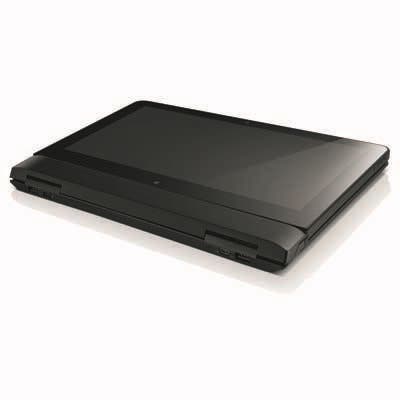
Ports And Comms
Like most Ultrabooks, Helix is a tad stingy with ports, but the keyboard dock helps make up for it. As a tablet, Lenovo provides a SIM slot, 3.5mm headset jack, one USB 2.0 port and a Dual Mode DisplayPort (D++) with Mini DisplayPort connector. D++ automatically detects the type of external monitor that's connected and adjusts accordingly to support 4K resolutions and stereoscopic 3-D. The tablet also has buttons for power, volume and screen rotation control. The dock delivers two USB 3.0 ports and passes the D++ port along. All connections are in the rear. There's also Wi-Fi a/b/g/n, NFC, Bluetooth 4.0 and wired Ethernet thanks to an included USB dongle that works in tablet or laptop mode. One of our nits is the upper-right location of the headset jack, which causes a speaker or headphone wire to dangle high in space. Another is the absence of an SD slot. For security, a sliding metal tab allows the tablet to be locked within the dock and the dock to be secured to an immovable object using an optional lock and/or cable.
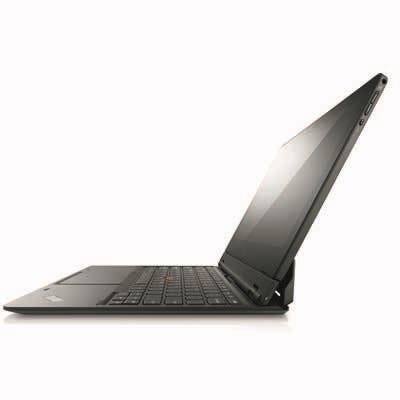
Battery Life
Another big bonus delivered by the dock is a 4-cell 28 Whr battery to add to the tablet's 3-cell 42 Whr unit. Between the two, Lenovo rates Helix at 10 hours between charges. Our tests delivered less but still respectable time on battery considering that some of Lenovo's power-saving features were disabled. To test battery life, we played digital media files continuously with the screen brightness at 100 percent and all other energy saving features untouched. With both batteries fully charged, the first test of the laptop delivered six hours and 17 minutes. Recharging both batteries took 4:25. Then the tablet alone ran for 3:49 on its own battery and for another 2:22 after docking it. Total battery time that way was 6:11. Imagine how a Haswell-based system might perform.
Regrettably, the Helix lacks -- inside or out -- a charge status indicator; it's left solely to Windows. That means that the unit has to be opened and powered up to determine whether batteries are charging or charged. We consider this a major design flaw.
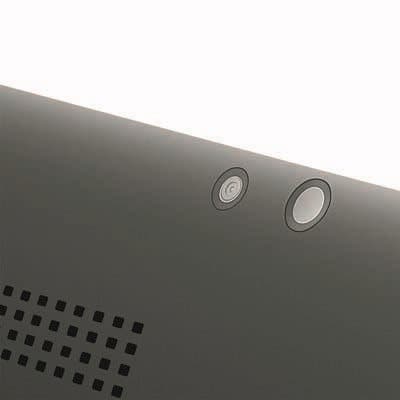
Display And Sensors
The Helix puts out beautiful images. Its bright, sharp display is among the nicest the Test Center has seen. When docking and undocking the tablet from its keyboard base, the Helix makes a confident sound reminiscent of Dell's XPS 12 when its HD display is flipped horizontally to convert laptop to tablet and back again. We also remember wishing that Dell's panel would pop out to become a tablet. Helix fulfills that wish albeit with added girth and heft. Like its 12.5-inch Dell counterpart, Helix's 11.6-inch display puts out a full 1,920-x-1,080 pixel resolution on an IPS panel backlit with a 400-NIT LED and is driven by Intel HD Graphics 4000 running at a peak rate of 1.15GHz. Helix offers a 10-point touchscreen that works with an optional stylus that tucks neatly into a pocket on the tablet. Helix includes sensors that adjust for ambient light and screen orientation. There's a 5-megapixel main rear-facing camera and 2MP front camera. Camera software includes face tracking.
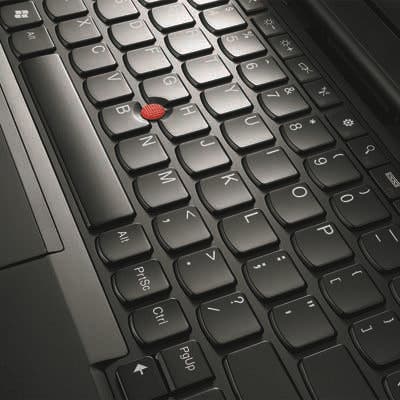
Performance
The tested Helix was running 64-bit Windows 8 Pro on 4-GB DDR3 RAM and an Intel Core i5-3427U 1.8 GHz processor with 3MB cache. It's also available with a Core i7-3667U 2GHz processor with 4-MB cache. Both are dual-core third-generation (Ivy Bridge) CPUs with Intel HD Graphics 4000 GPUs. Geekbench 2.3 from Primate Labs delivered a high score of 7,524, good enough for eighth place on the CRN Test Center's all-time list. The unit performs a cold boot in about 9 seconds and wakes from sleep in less than 2 seconds.
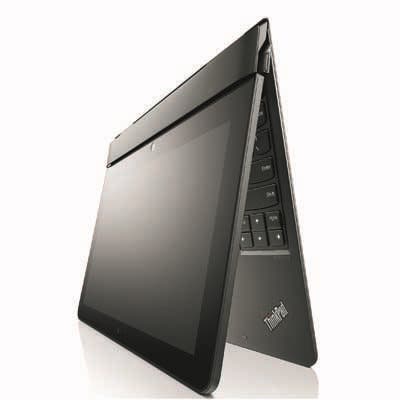
The Bottom Line
Lenovo built it, but will they come? With a reversible docking system for unique versatility, dual batteries for extra long life, label trays that keep its back side unblemished and an LED that dots the "i," the Lenovo Helix contains no shortage of innovation both cosmetic and practical. But, is it worth the price? For $1,477, the Ivy Bridge-based test unit included a 128-GB SSD, half its maximum complement of RAM, a detachable keyboard, all the requisite radios and sensors and is covered by a three-year warranty.